Today was to be mainly a birding day, visiting an open valley near the town of Ivaylovgrad with a mixture of grassland, scrub and dry orchard. One of the interesting characterists of this valley is that it holds a colony of European Souslik, a species of ground squirrel, which in turn sometimes attract Eastern Imperial Eagles. In general the site holds a wide variety of birds, including many possible raptor species, warblers and other breeding passerines. My main target was to photograph Isabelline Wheatear, the first of four wheatear species I'd be trying for this trip. On previous visits they had been very numerous at this site.
We arrived at 7:00am, and the first thing of note was a newly built road that brought one right through the main part of the site. I doubt it will have much affect on the wildlife here though, as hardly any cars ever drive that way, and in fact along the side of the road it had created an ideal sandy emankment for European Bee-eaters to nest in, which many were doing. Throughout the day Bee-eaters flying overhead were a constant presence. Once parked and out the car we began noting the first birds, starting with many Corn Bunting and Black-headed Bunting at the tops of the trees and bushes, a few Crested Larks on the road and some amongst the bushes, lots of Red-backed Shrike, a few Linnet and some Greenfinch. Flying overhead were Common Swift, Red-rumped Swallows, Barn Swallows and House Martins.
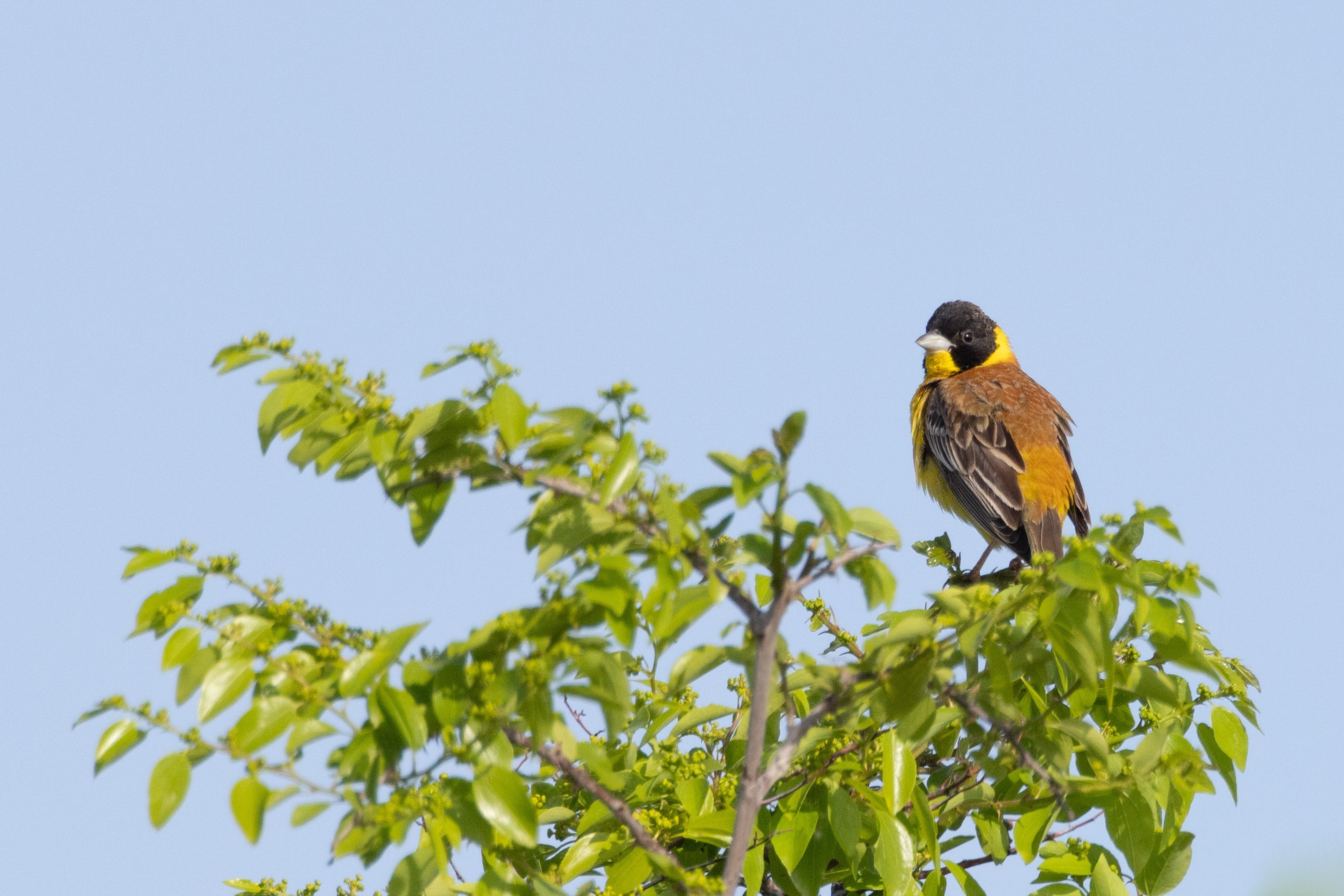
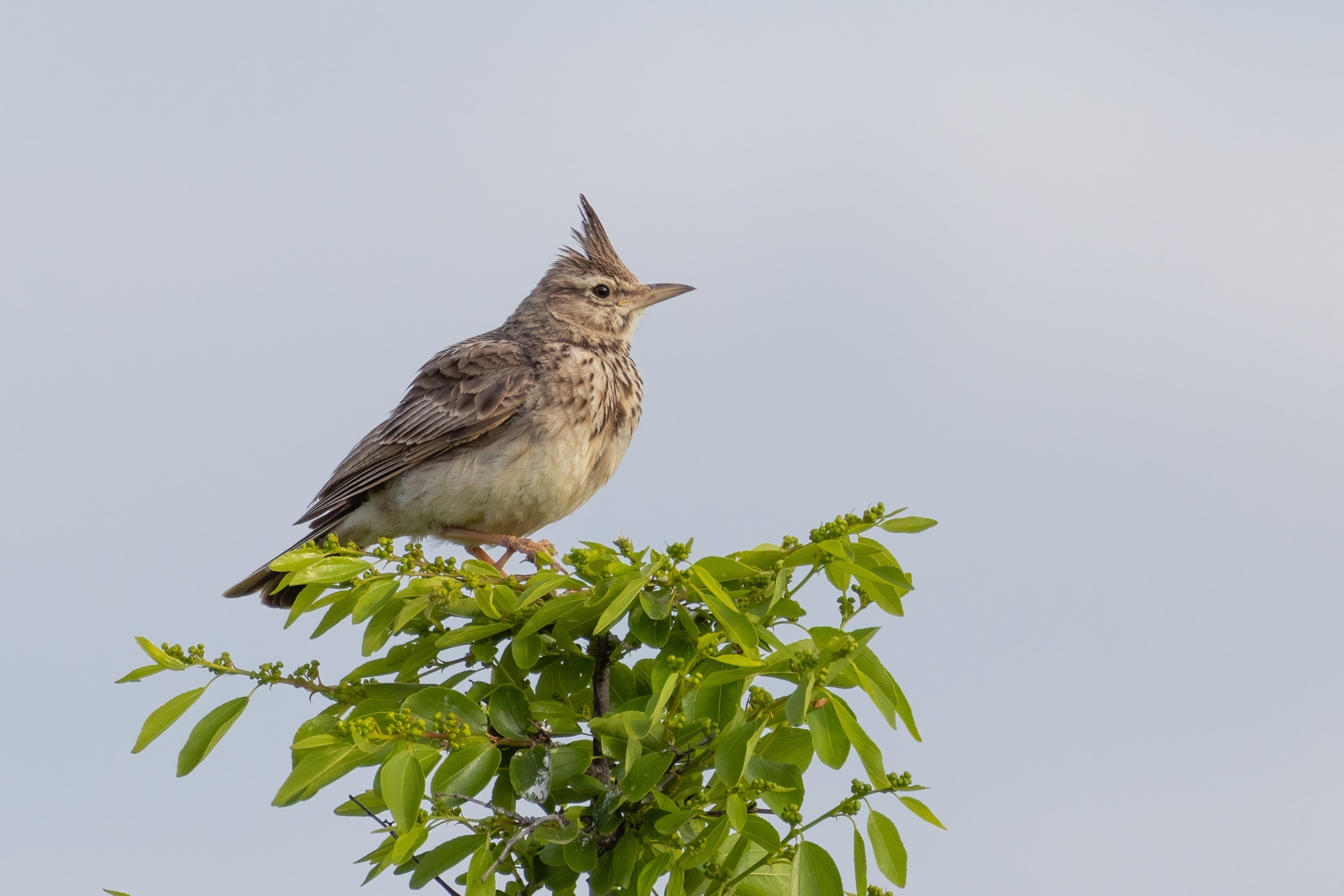
Before long we spotted the first Isabelline Wheatears, a short way down the valley below the road. After watching them for a bit, I chose a suitable spot to sit and wait. My patience was well rewarded eventually with the individual I was watching perching very close on a couple of occasions. They're certainly the drabbest of Europe's wheatear species, but perhaps the most characterful. Looking back I regret slightly not spending more time photographing these, but I'm happy with the photos I did take.
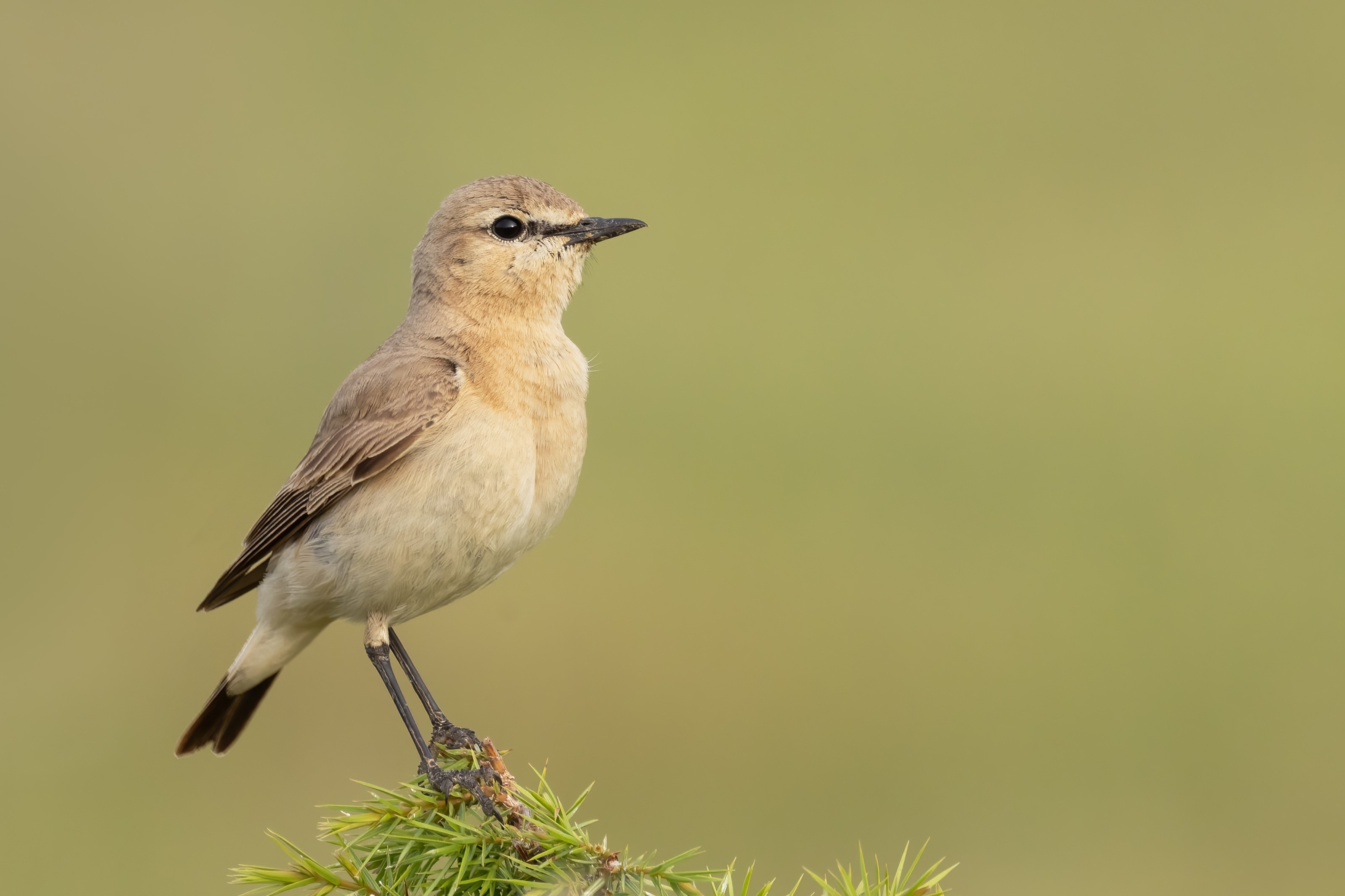



After finishing with the wheatears we decided to walk around a little more, first climbing up a short way above the road. Here the most interesting find were 4 Tawny Pipit: a couple of flyovers, one at the top of a bush and one feeding on the ground. This was a new species for me, having always failed to see them on previous visits to suitable habitat. Up here there was also a good opportunity to photograph European Bee-eaters as they glided below us in the valley. They were never particularly close but I was able to take a few atmospheric photos with mountains in the background. I also got a couple more Isabelline Wheatear photo, including something a bit different on a roadside sign.
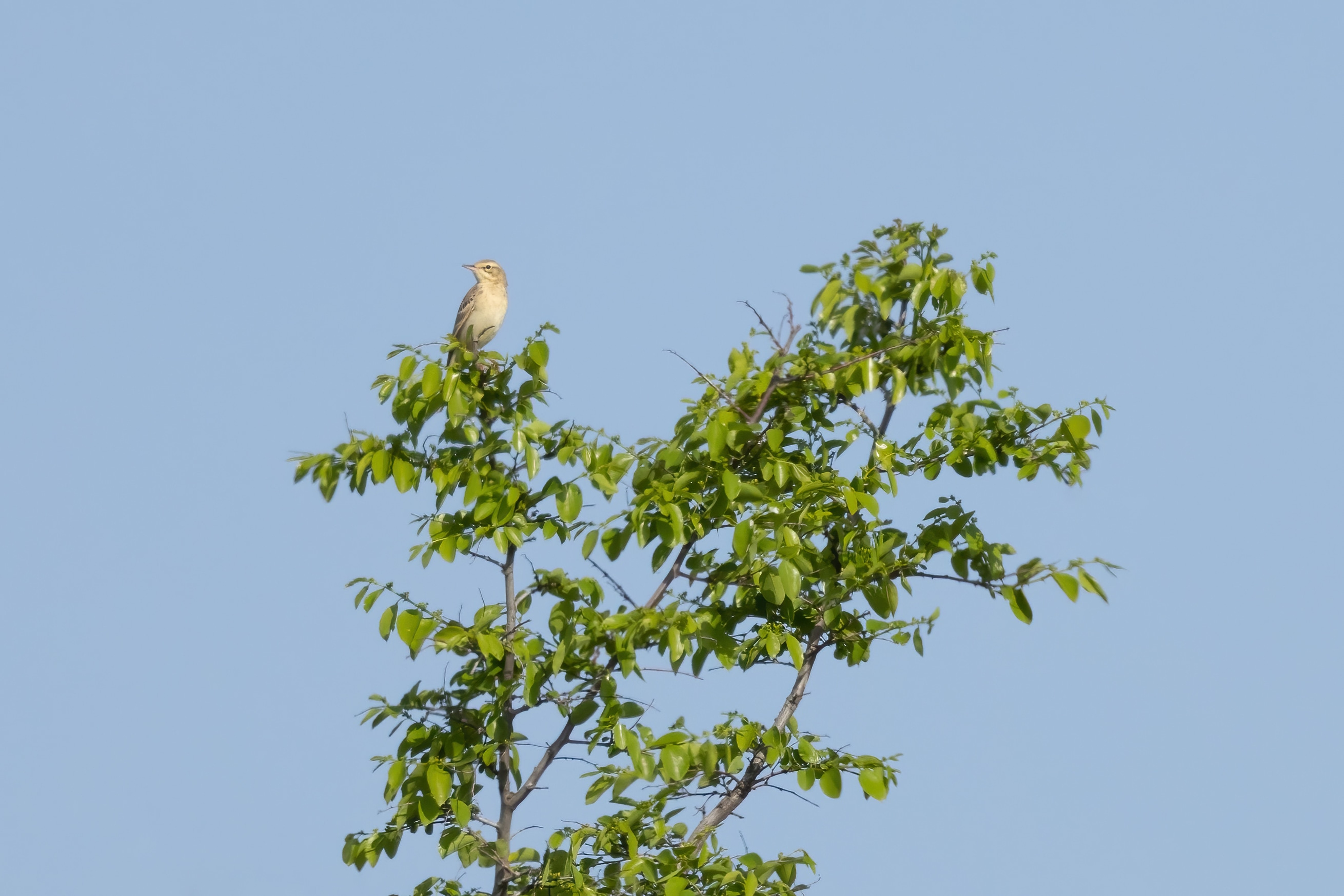
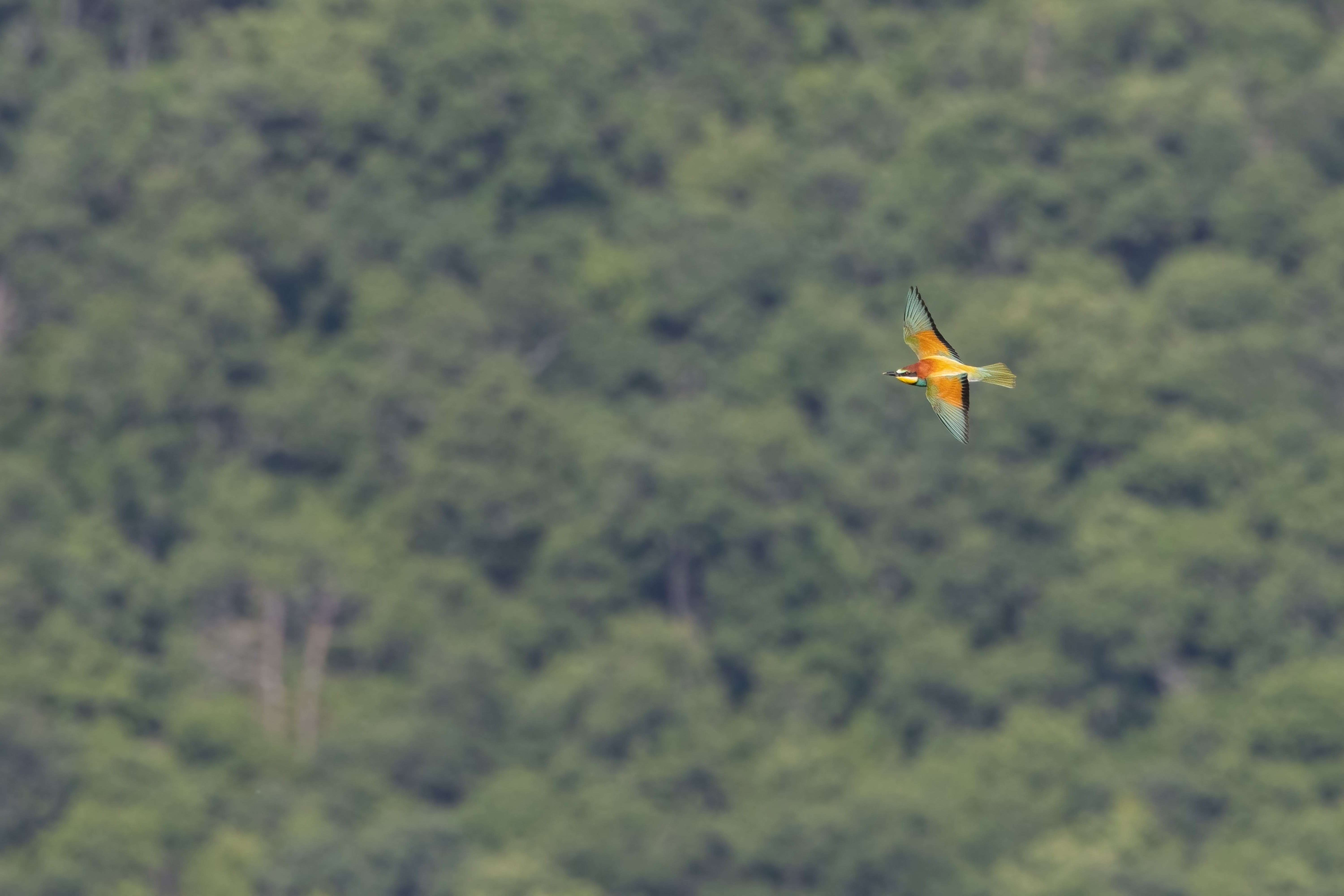

We then headed back further down the valley, and didn’t get far before something grabbed our attention: our first Woodchat Shrikes of the trip, another of the species I was keen to photograph today. Nearby we spotted a dead tree that looked ideal for a shrike to use as a hunting perch, so I decided to sit and wait amongst the adjacent bushes in the hope one would eventually fly in. I was sat there for about an hour, but eventually the shrike flew in and perched on one of the petruding dead branches, which it hunted from for a few minutes. While waiting for the shrike, I was kept well entertained, brief visits from a female Eastern Subalpine Warbler, a pair of Great Spotted Woodpeckers, and now that it had warmed up, several Booted Eagles appeared overhead.

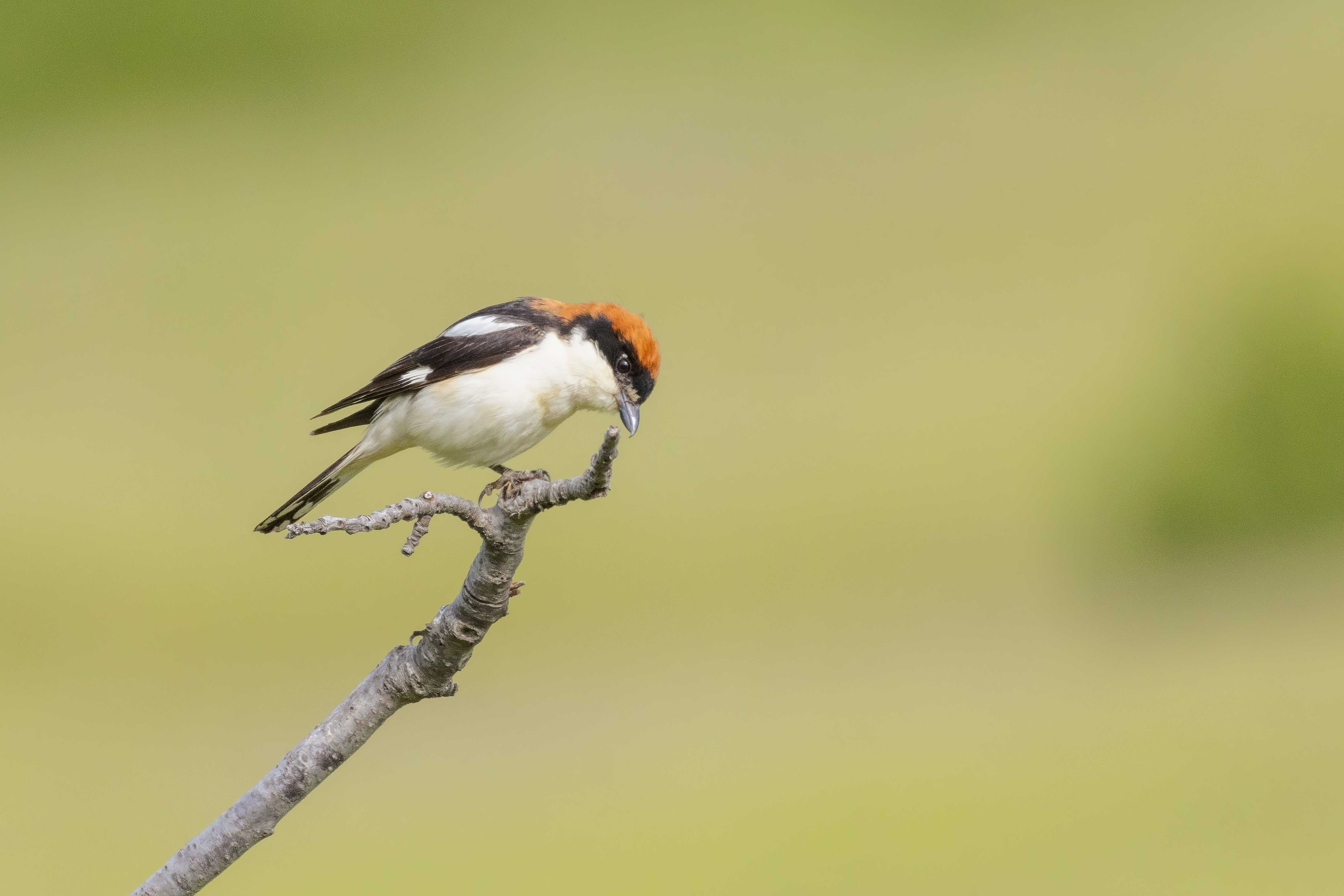
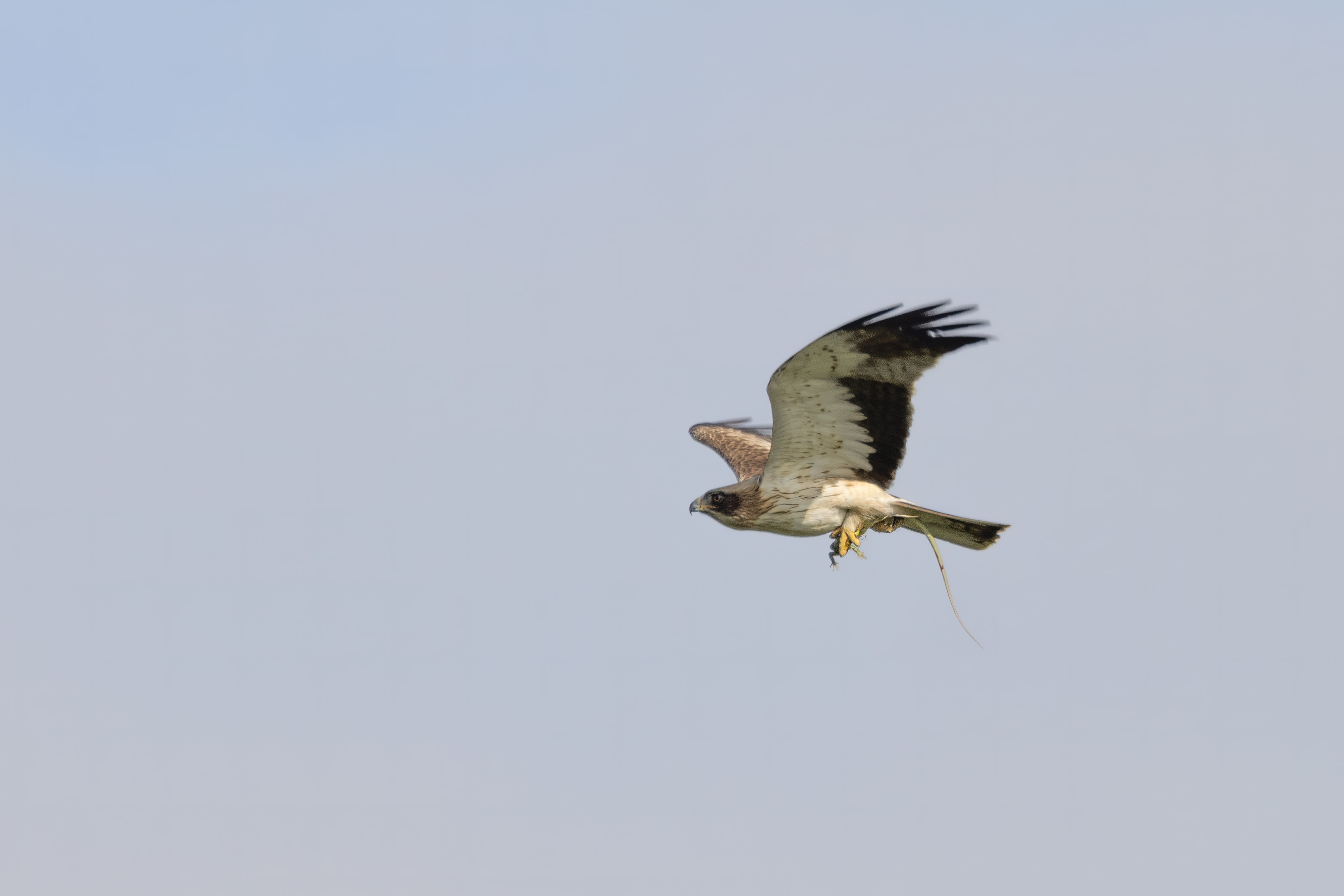
Moving on from the shrikes, the next good find was an extremely confiding Eastern Orphean Warbler. It was busily hunting invertebrates, and spent a particularly long time within a small tree that had several leafless sections. This meant the bird was often out in the open, unlike is often the case with these secretive warblers, and I got what are by far my best photos of any of the Sylviid warblers in Bulgaria. Nearby I also came across a Balkan Wall Lizard, a new species for the trip, but it wasn't possible to get any photos. At this point we also scanned the grassy area where the European Souslik colony is, and saw a couple of individuals.
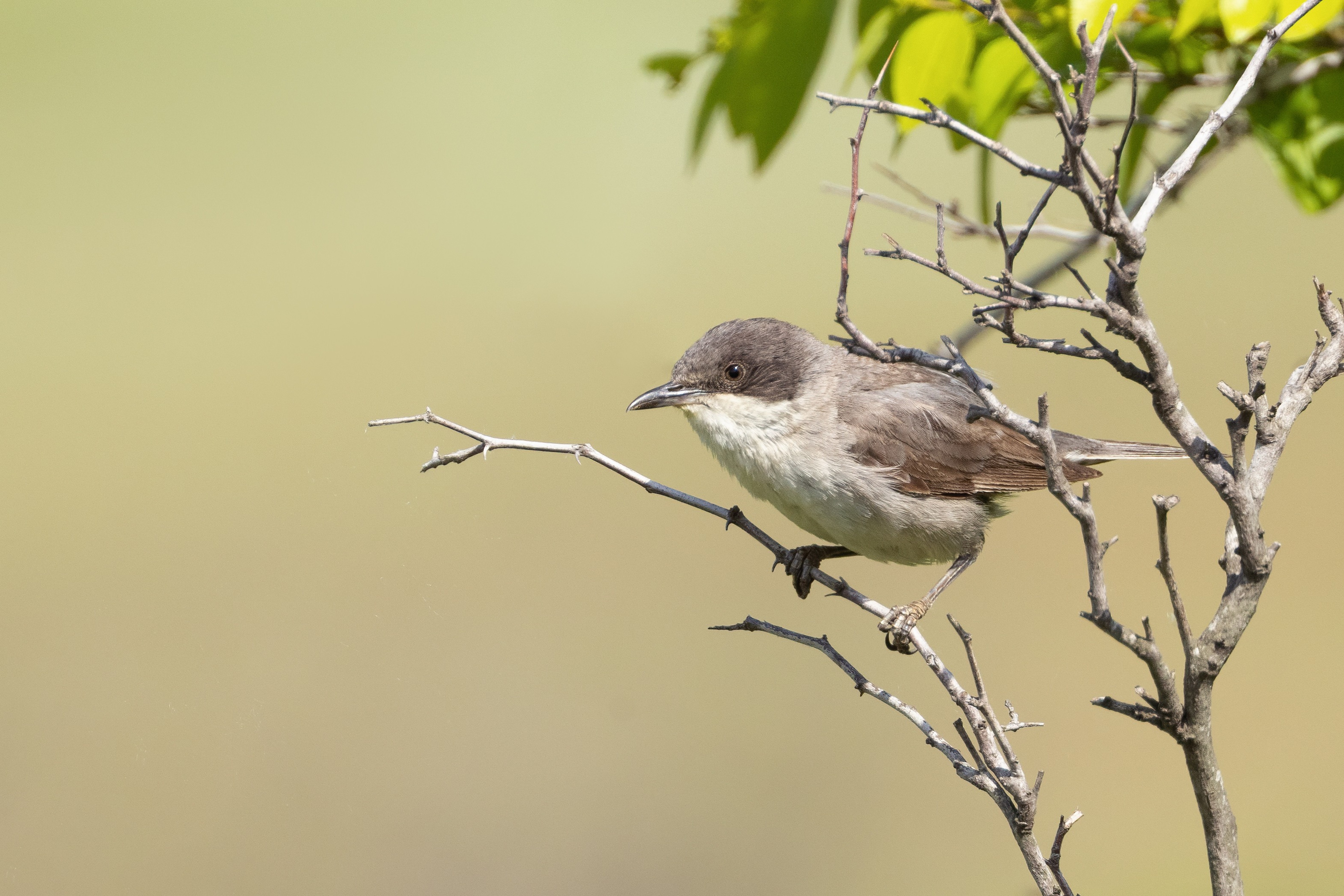
Next we came to small water fountain built into the valley. As well as a few Marsh Frogs, which can be seen practically anywhere with water in the Eastern Rodopi, we were very pleased to find 7 Balkan Pond Terrapin living there, basking at the edge of the water. These are the more uncommon of the two terrapin species found in Bulgaria. They were extremely nervous, and as soon as we approached they all quickly dived back into the algae-laden water, out of sight. After a quick drink I got myself set up beside the fountain, waiting quietely for them to re-emerge. After 20 minutes they began to gradually climb out of the water, getting back into position to sunbathe. It was interesting to watch them from time to time feed on the algae. As I took a lot of photos of these, I will do a dedicated blog post with more images.
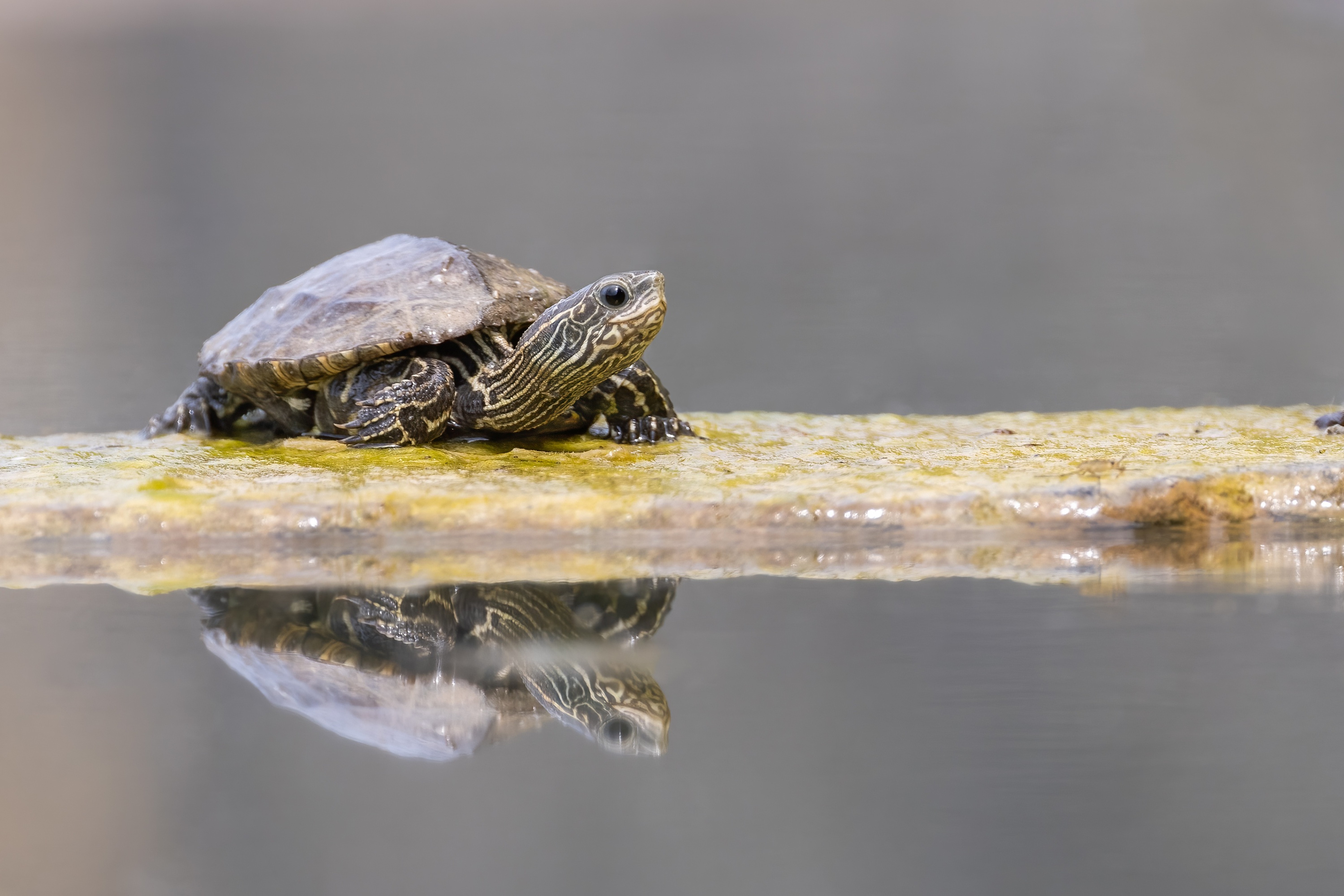
In the end I spent almost one and a half hours sitting here by the fountain, having a lot of fun photographing the terrapins in different poses and angles. At various stages during this time, both a male and female Black-headed Bunting came down to the fountain to drink. On one occasion the male landed just a meter from where I was sitting - far too close to get anything more than it's head in frame. While waiting, there were at various points raptors overhead, of most interest a male Marsh Harrier. Not a species we were expecting here at all - almost certainly just passing through. We had wonderful close views of 2 Short-toed Eagle circling together, had a few more Booted Eagle go over, as well as several Common Buzzard. I also added to my rapidly growing collection of European Bee-eater photos, and had 4 Northern Raven fly over.w
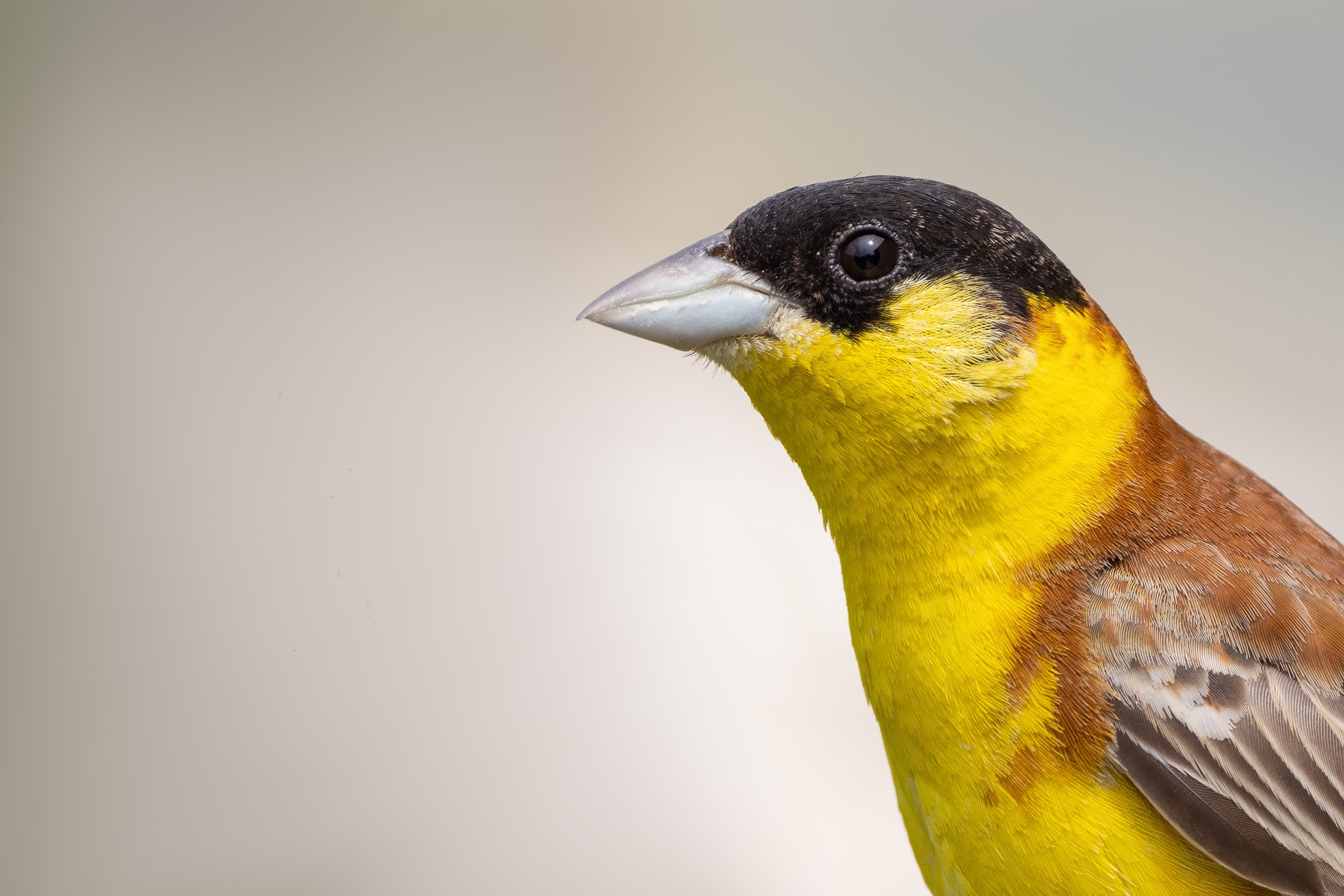
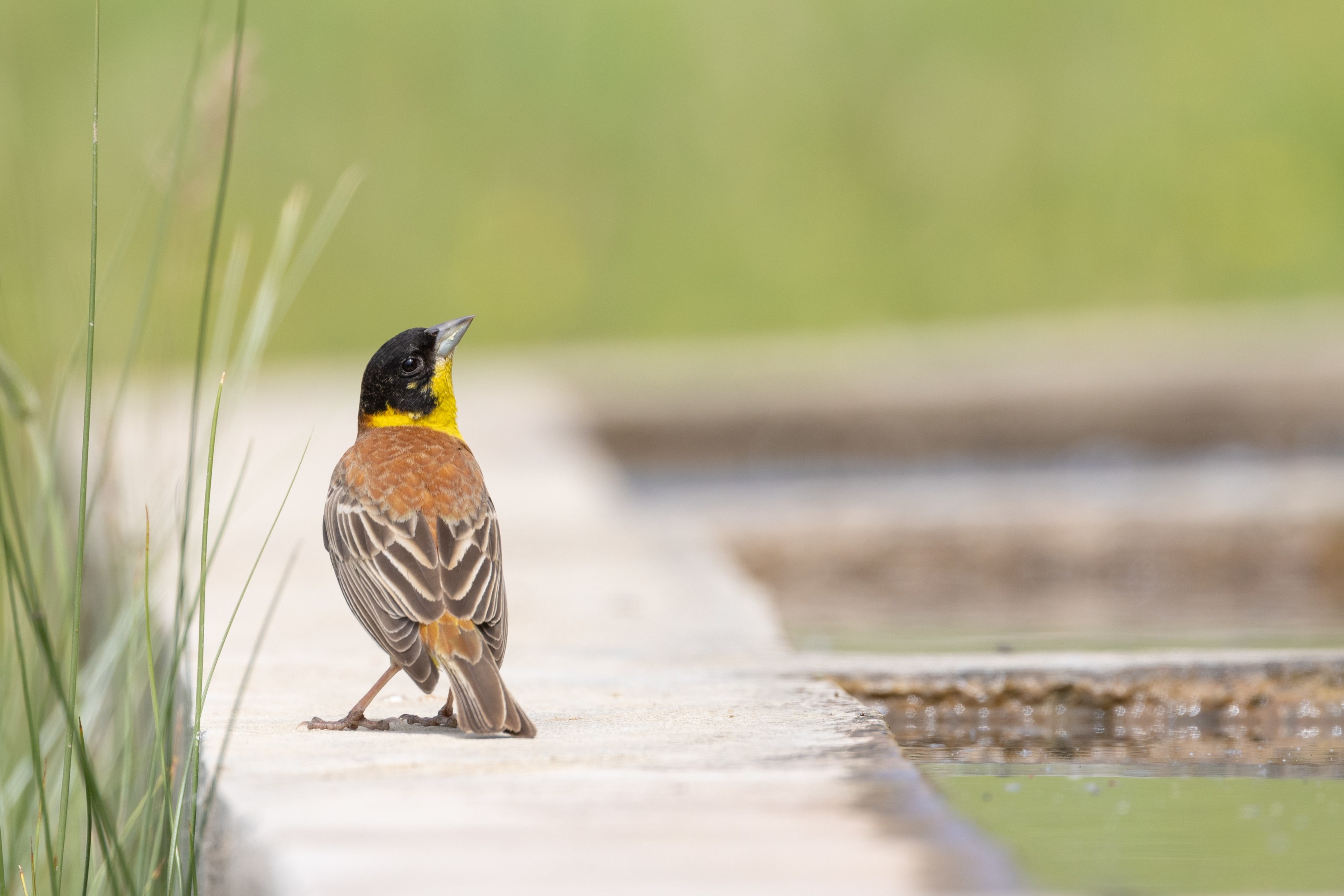
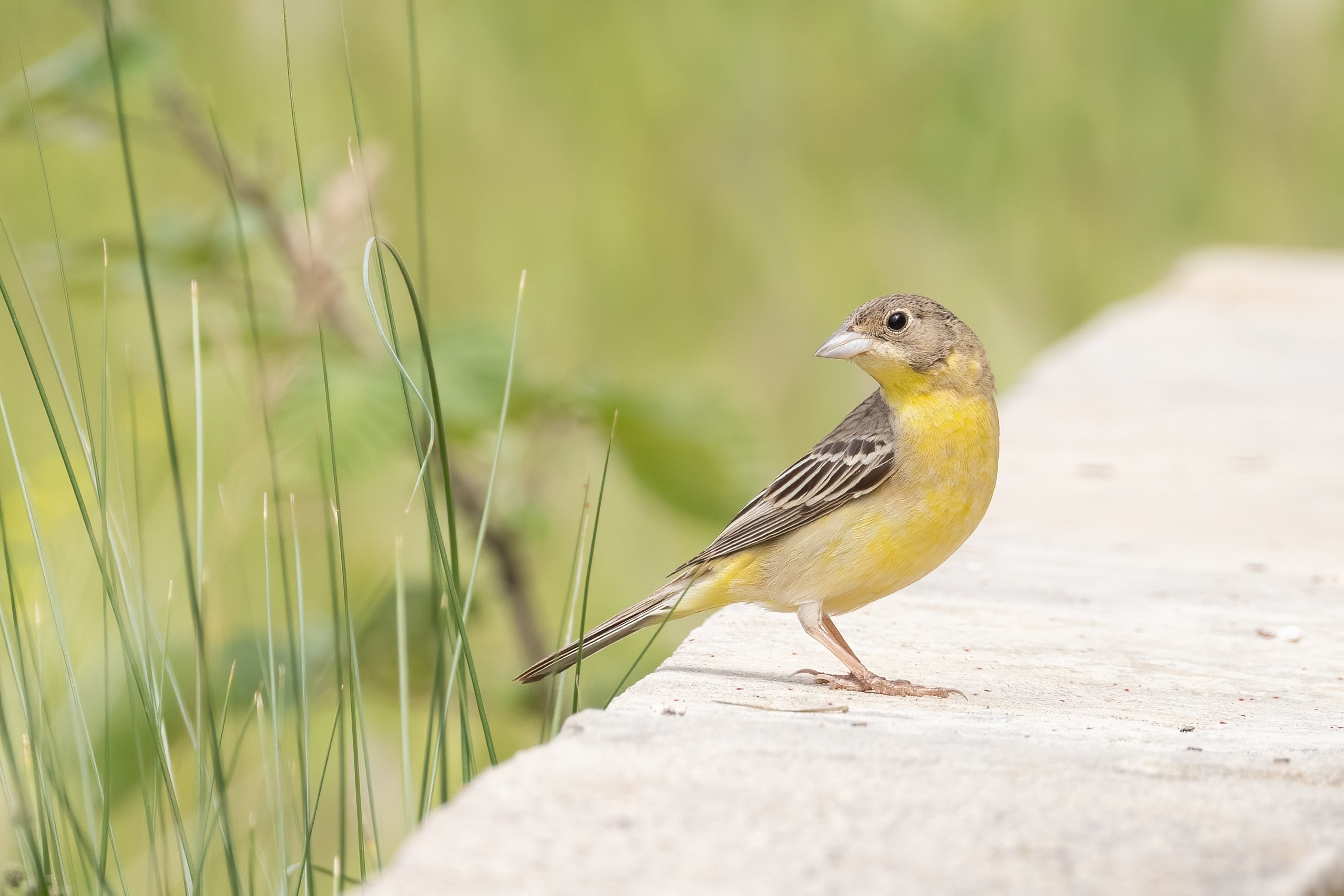
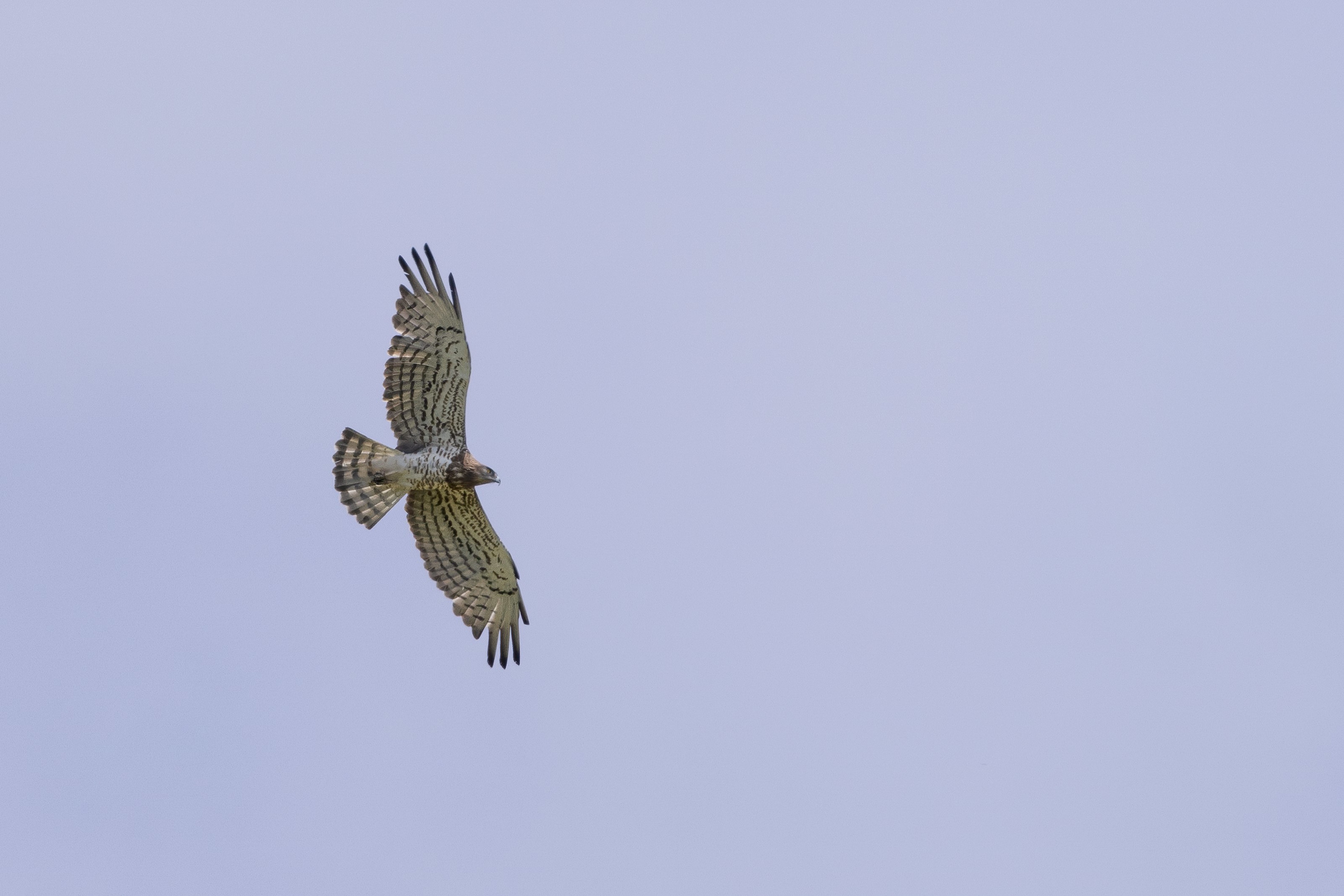
Moving on from the fountain, we next walked briefly into an area of dead orchard. There were two species we hadn't seen yet during the day that we thought we'd have a chance for here: Tree Pipit and Wryneck. We had success only with the first, seeing 2 Tree Pipit briefly. The only thing I photographed in this area was another Woodchat Shrike, a male which allowed me to get surprisingly close. We then moved back up a bit higher into the valley, this time into an area with some larger trees. Here our focus switched to warblers, with a few more Eastern Orphean Warbler, including another individual which showed well, 5+ Olive-tree Warbler, and a new bird for me in Bulgaria, Garden Warbler. I spent a long time out in the baking heat attempting to photograph an Olive-tree Warbler; a thankless task with no reward other than a single record shot that won't be appearing here.

In this area we came across several species of orchid: 20+ Pink Butterfly Orchid, the species I'd photographed yesterday, a clump of 30+ 'Horned' Woodcock Orchid (Ophrys scolopax cornuta), a taxon found in south-eastern Europe, 15+ Bug Orchid, a few of which were nicely in flower, and a single Pyramidal Orchid. Butterflies and moths were not the purpose of the day so I didn't pay too much attention, but did note lots of Orbed Red-underwing Skipper, Oberthur's Grizzled Skipper, Silver-studded Blue, and singles of Wall Brown, Queen of Spain Fritillary and Yellow-banded Skipper. I also saw a new species of tortrix moth for me, Aphelia ferugana, a species found across a large part of Europe but absent in the UK.


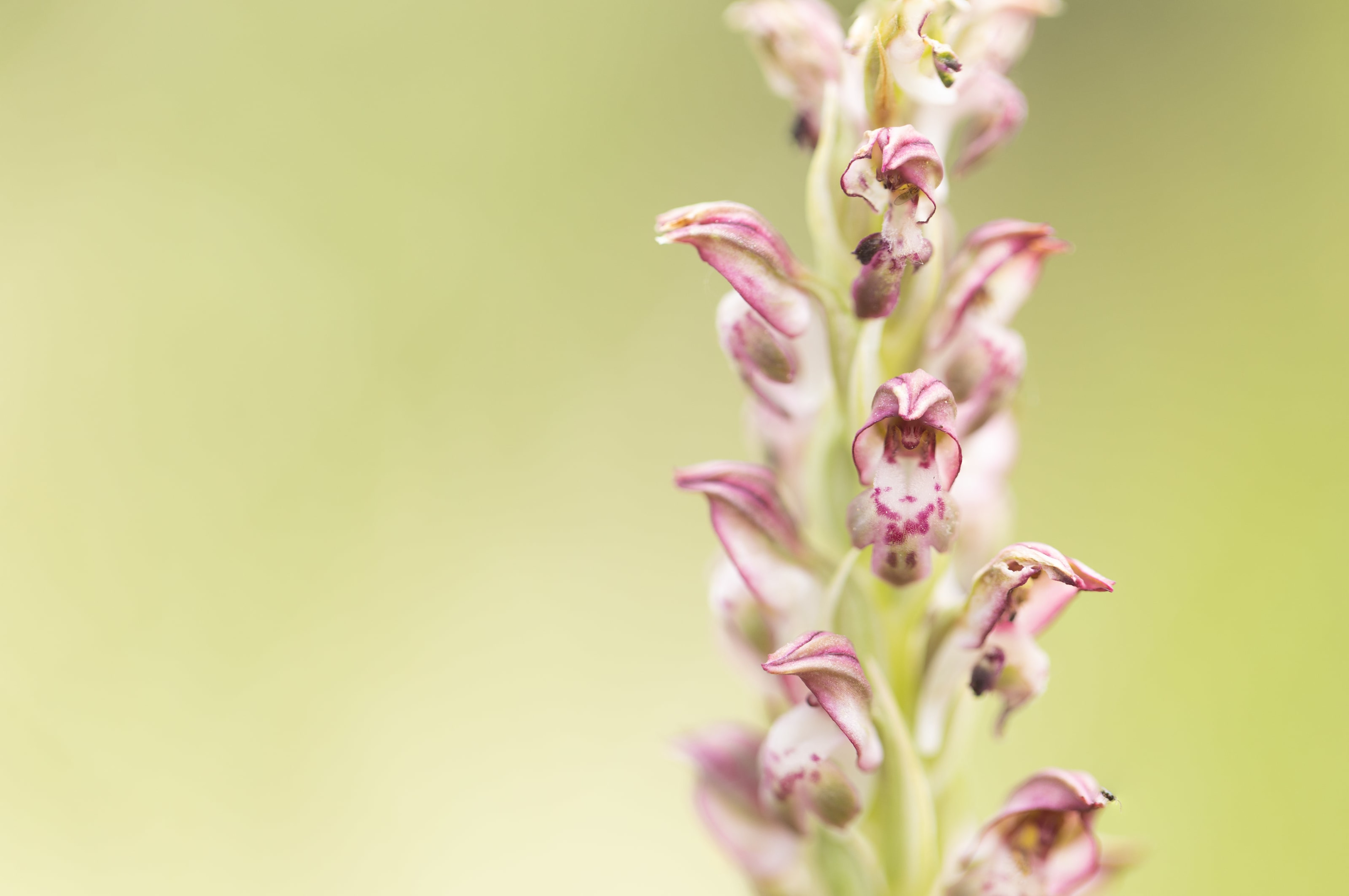
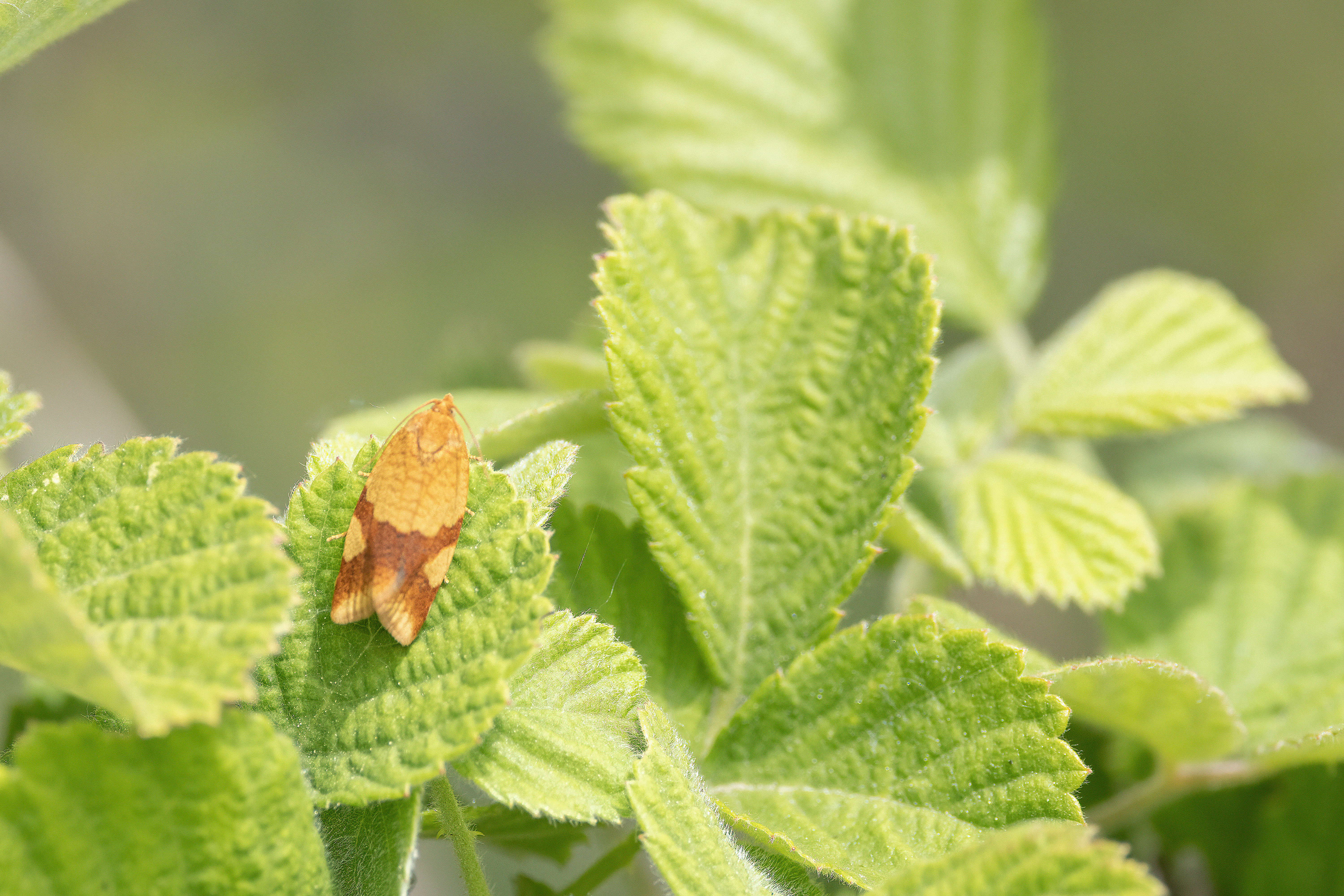
At just after 3:00pm we decided to move on from this valley, and visit a nearby 'ancient bridge' and the accompanying river. Our session here lasted just over an hour before we were forced to rush back to the car with the onset of a heavy thunderstorm. But that hour was still enough to pick up a few things, including several herps: Marsh Frogs, Yellow-bellied Toads, two juvenile Fire Salamanders, Eastern Green Lizards, and the first snake of the trip, a Dice Snake. There were also several notable butterflies here, headlined by a Bulgarian specialty and one of my key species for the trip, a Grecian Copper. Unfortunately it flew off before I took any proper photos. Other butterflies seen included the second Blue Argus of the trip, Orange-tip, Glanville Fritillary, Lesser Spotted Fritillary, a Black-veined White and 2 Mazarine Blue, and we also noted 2 Eastern Spectre, one of the key dragonfly species of the trip, but one I would attempt to photograph on another day, and 3 Grey Wagtail.
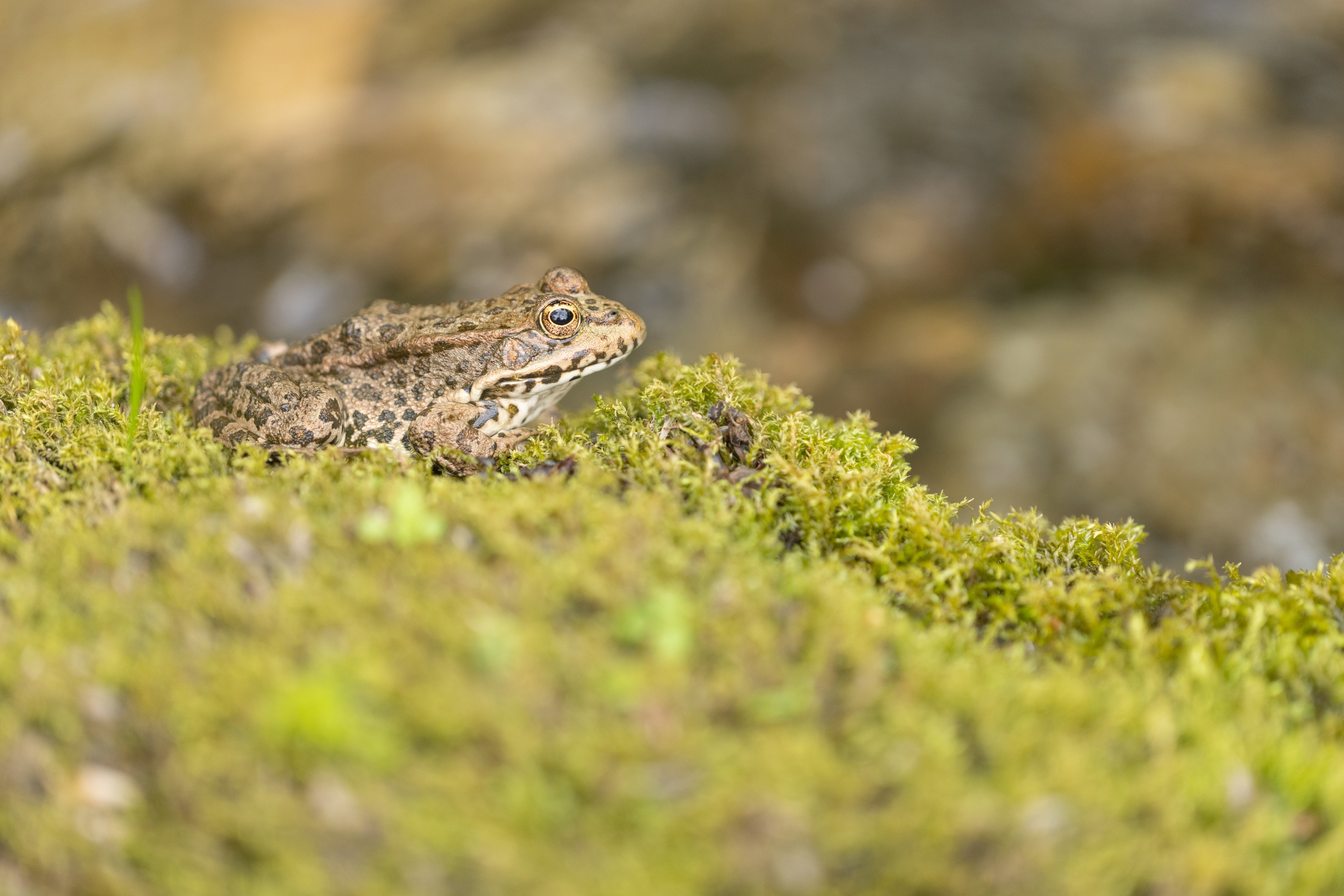
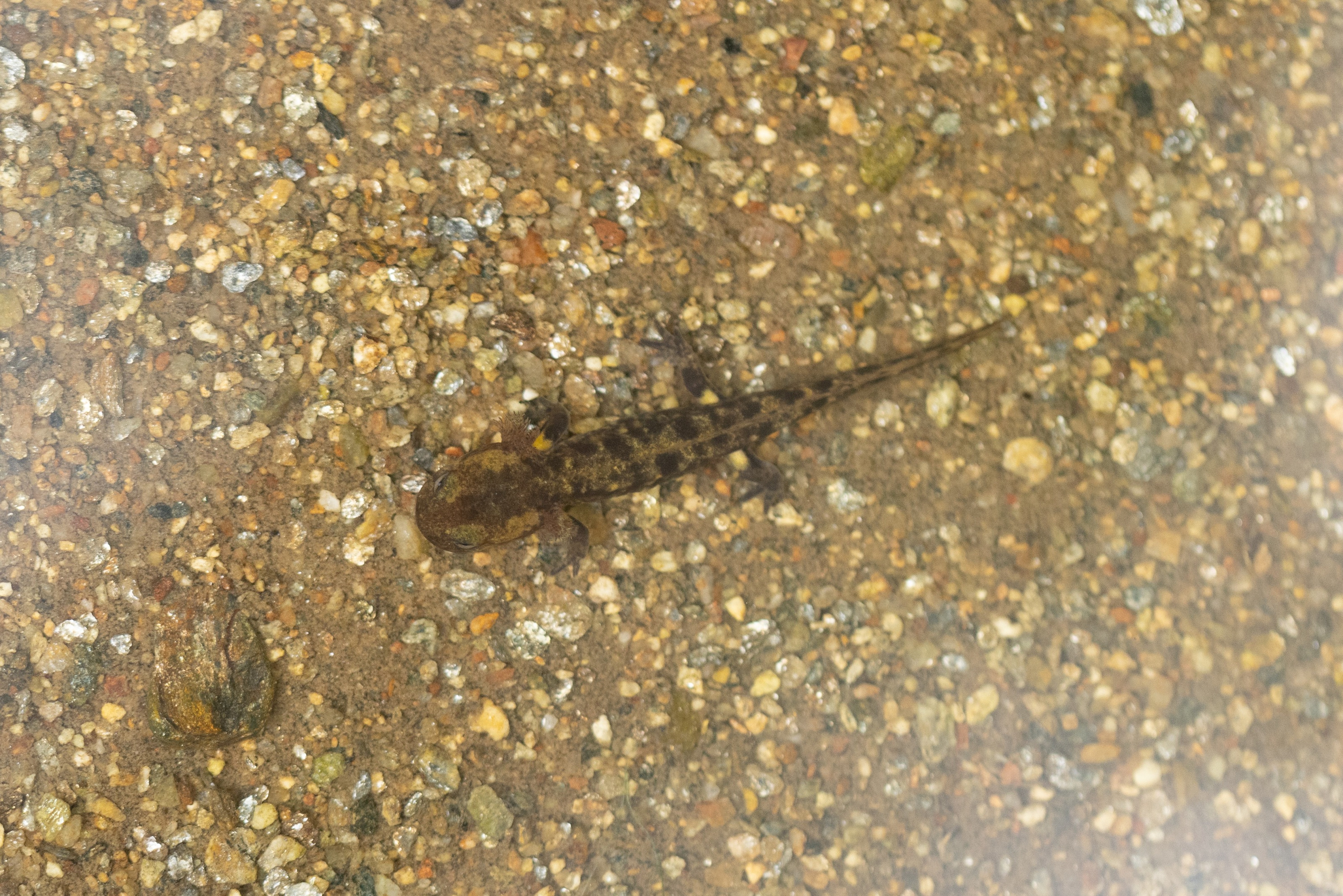
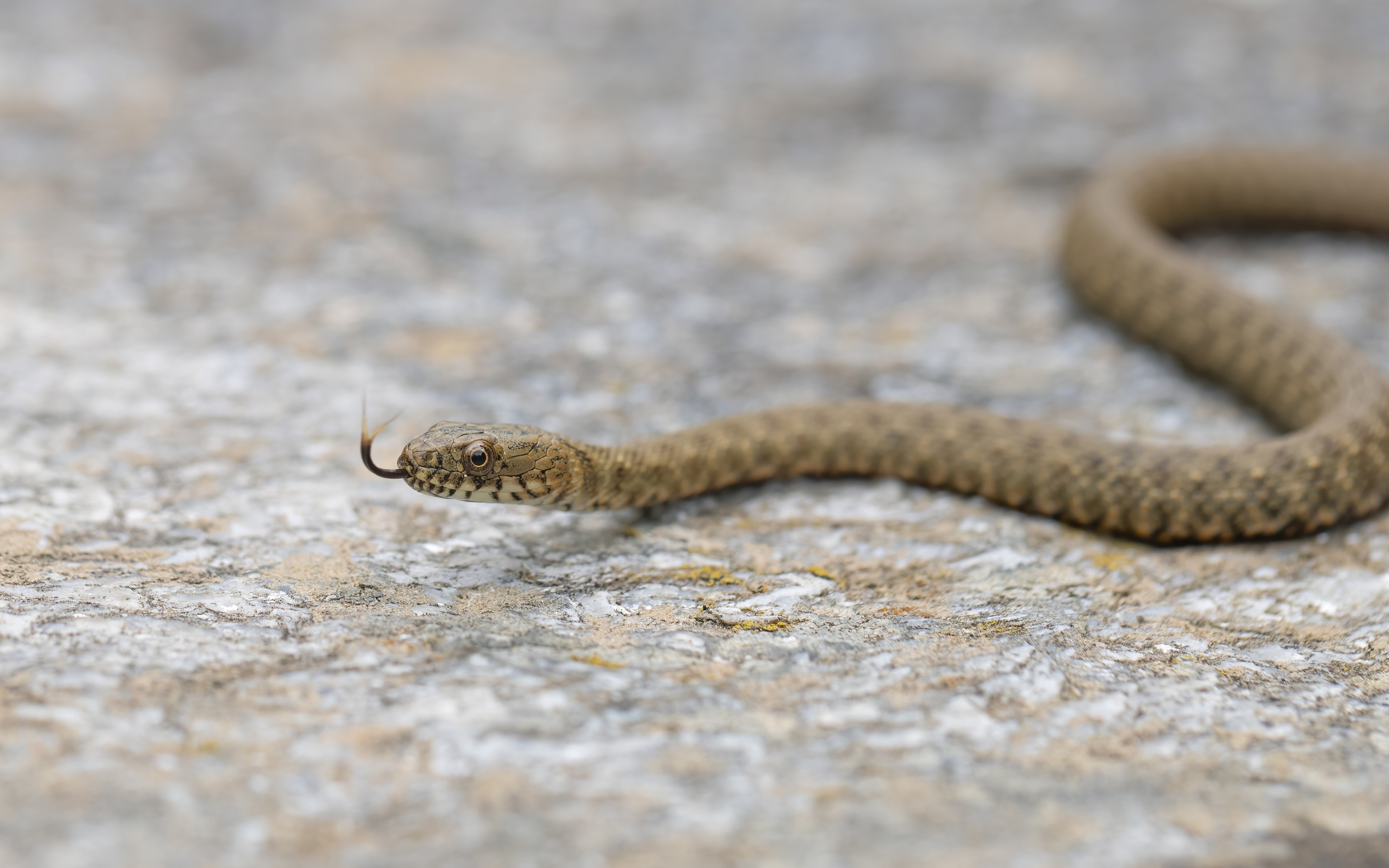


We drove back towards the accommodation in the pouring rain, but the weather eventually cleared up. In fact the rain stopped just in time, as the drive back happened to pass one of only two known sites in Bulgaria for a rare orchid, Eastern Hooded Helleborine. This species' distribution is concentrated in the eastern Meditarranean. They weren't exactly difficult to find, with at least 50+ Eastern Hooded Helleborine (Cephalanthera epipactoides) lining the side of the road in a couple of short stretches. The road can be seen in the background of some of my photos.


We made a couple of more impromptu stops on the rest of the journey back. The first was for a slightly bedraggled Lesser Spotted Eagle uncharacterestically sitting in a meadow for a few minutes before flying off. We then had a little walk in the surrouding area, adding 7 Long-tailed Tit to the trip list, and seeing 2 Woodchat Shrike. A bit further on we stopped again, for the sad but all too common sight of a dead European Glass Lizard on the road.
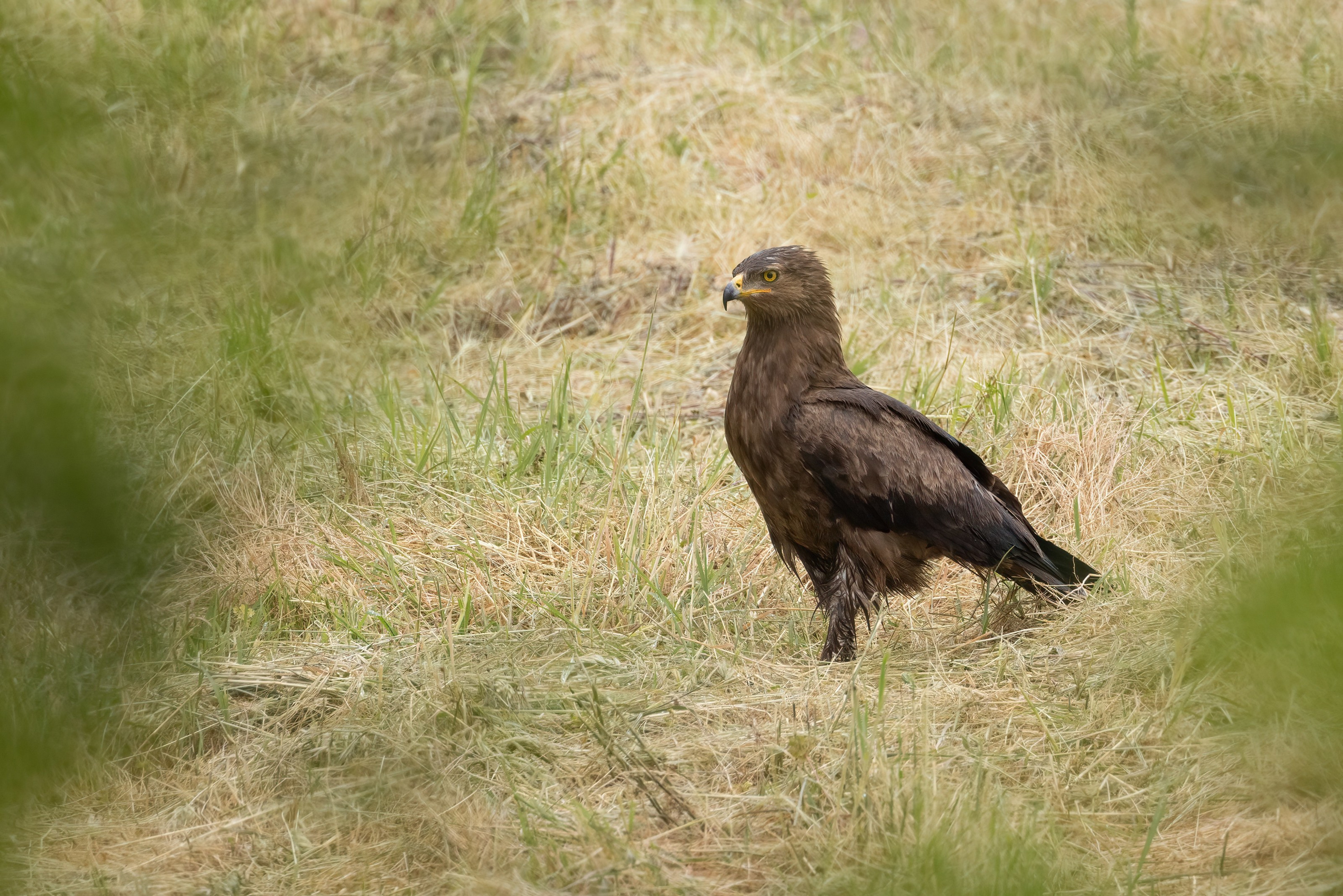
As there was still a little time left in the evening, we decided to do a short walk by the river in the village we were staying in, mainly to search again for the Masked Shrike we'd seen but failed to photograph the previous morning. We were unable to refind it, but heard several Eastern Olivaceous Warbler, and saw many Red-backed Shrikes, a Black-headed Bunting and lots of the tortrix moth Hedya pruniana (Plum Tortrix) on some sloe bushes. Later in the evening, on the wall of the accomadation I got my best Bulgarian Bent-toed Gecko (Mediodactylus danilewskii) photos yet.
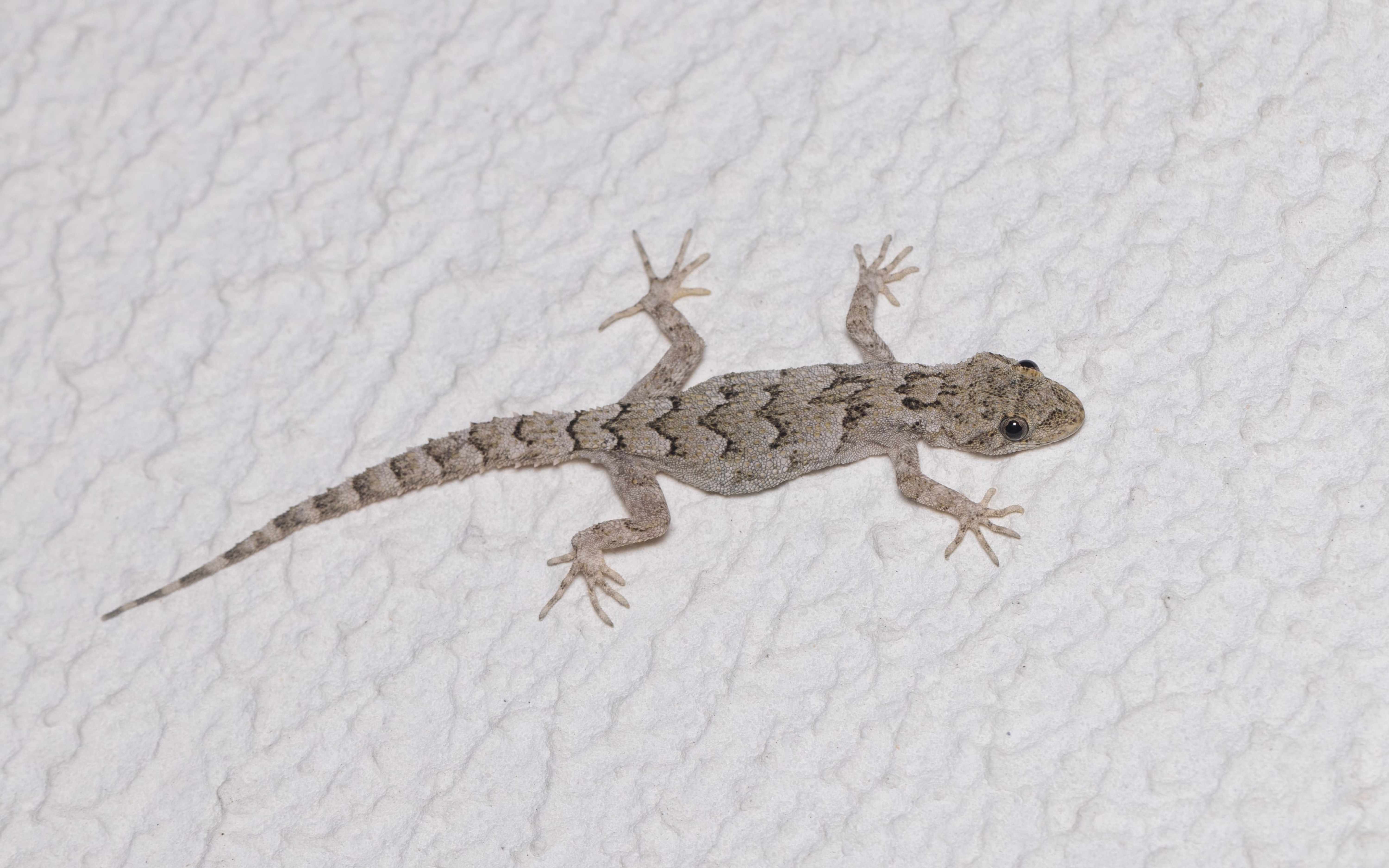
Leave a comment: